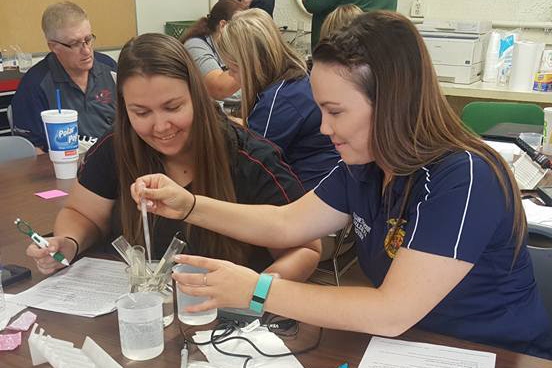August 4, 2017

Arizona faces a critical shortage of agricultural teachers which has officials concerned about its lingering impact on the industry that helps feed and clothe the nation.
The University of Arizona’s (UA) Robert Torres, president-elect of the American Association for Agricultural Education, says there’s “absolutely” a shortage of agriculture teachers which impacts agricultural education.
And the shortage is not Arizona specific but almost a nationwide problem.
As a result, schools may not expand or add programs, and in some cases may cancel existing programs. This is particularly true for smaller rural schools. Either way, the agricultural teacher shortage can adversely impact the quality of instruction that agriculture students receive.
“Every time we fail to get a qualified, highly motivated person it’s a critical issue,” said Torres.
“It has a long-term effect on the program. It’s a multiplier effect… If we don’t have quality teachers in the classroom (then) it affects agricultural education and the ability to attract students to the agriculture career field and preparing them to function through that career.”
Also sharing Torres’ concern is Jeremy Plumb, a former agriculture teacher and FFA advisor who is now the superintendent of the Mountain Institute JTED in Yavapai County.
“Absolutely, there is a shortage nationwide…since I entered the profession 20 years ago.”
He estimates a 15 percent to 20 percent ag teacher shortage nationwide with far more positions opening each year than the number of new ag teachers available to fill them.
Katie Aikins, education director at the Arizona Farm Bureau at Gilbert, says a shortage creates a critical concern for the future of the state’s $17.2 billion agricultural industry. With the average farmer at 59 years of age she says there’s a need to prepare the next generation’s work force for the production of the nation’s food and fiber.
“We need students coming out of school who are able to go right to work,” said Aikins.
Plus, there’s a need to share agriculture’s message with consumers, she says, and gain their support for policies that benefit the farming industry.
“At the very basic level, we need people making policy and decisions who have some experience with agriculture.”
The teacher shortage is a case of ‘supply and demand,’ according to Ellen Thompson, project director with the National Teach Ag Campaign.
The campaign is an initiative of the National Council for Agricultural Education, led by the National Association of Agricultural Educators, and sponsored by the CHS Foundation, DuPont Pioneer, Growth Energy, and BASF as a special project of the National FFA Foundation.
“The demand is encouraging… wonderful,” Thompson said. Programs are being expanded and 94 new ones have been added to meet a growing interest by students in the subject.
However, “We just don’t have the supply (of teachers) to meet the demand,” she said.
Nationwide, Thompson pegs the nationwide shortage at 200 to 400 agriculture teachers annually which impacts tens of thousands of students. In Arizona, a shortage of about 20 positions last year directly impacted 1,600 students.
In the state, 23 agriculture teachers left the profession while only six graduated from the UA agricultural educator training program. The number is expected to increase in coming years. Meanwhile, the state added five new agricultural teaching positions.
About 50 to 100 vacant positions nationwide don’t get filled on an annual basis, and 25 to 30 are closed due to the lack of an agriculture teacher, says Thompson. In Arizona, two positions were closed due to the agriculture teacher shortage during the 2016-2017 school year.
Thompson attributes the shortage to several factors including retirements, ag teachers moving into non-teaching education positions, or leaving the education profession entirely for other opportunities.
While about 30 states are struggling with an ag teacher shortage, Thompson says Arizona has a higher loss rate despite a large student interest in agriculture programs.
“Schools want to add programs but they just can’t get teachers. The state has about a 22 percent loss rate,” Thompson said.
Salary is often cited as a reason to change jobs for better pay. Farm Bureau’s Aikins says, “Arizona teachers make 75 cents for every $1 the average teachers around the nation make.”
Kevin Rogers, Arizona Farm Bureau president, sums up the organization’s concern about the shortage.
“This is a huge problem that puts the future of our industry at risk,” the farm leader said. “It has been sitting on the back burner far too long and I challenge the agriculture industry to join Farm Bureau in tackling this head on.”
Rogers, a Phoenix area crop grower, said, “The time is now to act on what is important to us, and our common ground has always been our youth – the students of agricultural education and the FFA.”
www.azffafoundation.org
You May Also Like




